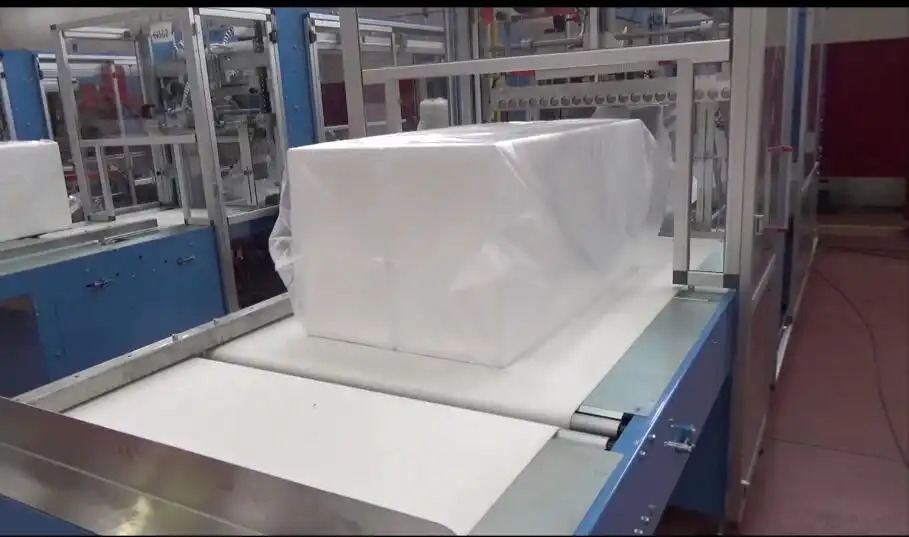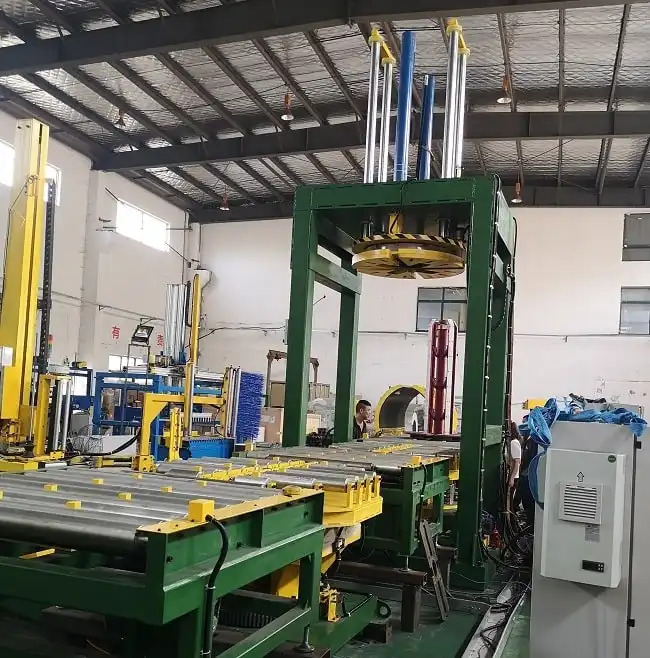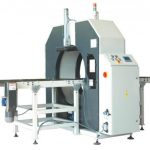From there, the carrier with Film blister tray is conveyed on the filling portion in the line, which includes eight filling modules, every stocked with numerous diverse drugs held in specially engineered canisters. Based on which prescription drugs should be dispensed to the tray, the carrier could quit at numerous stations.
Once the blister tray reaches the right filling station, it stops beneath a grid with 28 holes. To start out the filling procedure, a Fanuc LR Mate 200iD six-axis robot makes use of a fork mechanism to choose up a canister holding the needed drugs and location it on the platform. Canisters are stored on the vertically rotating carousel with ten shelves that will hold as much as a greatest of 300 canisters (420 in an extended carousel), or 300 diverse prescription drugs, based on the mixture of canister sizes. Whenever a filling module is in use, there will likely be 1 canister on each and every of two platforms-one that is certainly actively getting picked from and one particular which is on standby.
To stop operator entry on the pills-which may be managed or non-controlled with special medications-the canister is created using a specific locking mechanism that could only be unlocked when positioned around the platform. Once the medicine is prepared to be picked, the lid in the canister is lifted utilizing a proprietary technologies from CASI. When the lid is open, a Fanuc M-1iA/0.5S four-axis delta robot picks just one pill through the canister and locations it by way of the 28-hole grid and in to the suitable blister while in the tray, then repeats this selecting procedure, as essential, to location all tablets to the appropriate blisters while in the tray.
Numerous inspection technologies in the level of filling make sure the robot is appropriately selecting total, unbroken tablets and it is dispensing them in to the blister tray. Initial, a backlight is utilized for the canister to provide a silhouette in the drugs within. “The robot’s vision method is qualified to seek out a particular type and dimension in the pill,” explains Gillett. “If it sees 1 that fits that type and dimension to inside a programmable tolerance threshold, the robot will choose it up and spot it to the blister card. That is critical since you really don’t need to be dispensing partial tablets and counting them as complete, as well as partial capsules that you just do not count in any respect.”
Once the robot drops a pill by way of the grid right into a blister, the pill crosses a laser that is certainly shot throughout the opening in the grid. The sensors detect the pill has positively broken the plane from the laser and has gone in to the card. “If we detect that anything has broken that light at a time when we’re not dropping a pill, in addition, it flags that blister to get checked through the on-site pharmacist, in situation a foreign equipment and substance has dropped in to the blister,” says Gillett.
A third way the program checks that a pill continues to be properly picked and positioned is by monitoring the vacuum stress while in the selecting instrument, which adjustments whenever a pill is found and once again when it really is launched. Says Gillett, “A large amount of energy is place into ensuring we are able to get an precise fill each and every time-no additional drugs, no missing tablets, no capsules within the incorrect blister, due to the fact it is a security concern.”
CASI has also integrated proprietary technologies associated towards the selecting resources for your Fanuc that remove cross contamination of drugs versus traditional filling methods that could make use of the very same tube or funnel to dispense a number of drugs. CASI has also eradicated airborne cross contamination by way of the usage of HEPA filtration.
After a canister is emptied of all viable drugs, the LR Mate 200iD robot in this module locations the canister on the conveyor that carries it on the finish from the line the place it truly is positioned inside a queue ahead of currently being picked up by a mobile robot and brought on the replenishment space. Referred to by CASI because the Automated Canister Replenishment Car (ACRV), the Lynx mobile robot from Adept incorporates a locking method that stops the unauthorized elimination of medication in the canisters within. The ACRV also delivers filled canisters for the line, exactly where they’re instantly conveyed towards the suitable filling module and positioned inside the carousel through the LR Mate.
Meanwhile, within the prescription putting your unit together line, soon after a blister tray has passed by way of the complete filling line and each of the drugs linked with that tray happen to be dispensed, the tray is conveyed to an inspection method. In the event the tray is appropriate, it continues to a station the place a backing card is heat-sealed for the tray.
Inside the up coming stage, a cover and spine are connected for the tray. The cover protects the blisters and, in the up coming station, is printed with data within the medicines within by a Videojet DataFlex 6420 thermal transfer overprinter. “It prints the knowledge on-demand for that particular buyer and contains two colour photographs of every drug displaying two various angles, dosing info, drug details, and much more,” says Gillett. “It’s quite properly organized.”
Guiding the complete line can be a modular end-to-end pharmacy software program method from automatic system, web-based equipment and , “It is most likely among the much more sophisticated software program techniques I’ve ever worked on. It features a great deal of detail. But we attempt to create it to ensure that operators can recognize it and assistance it within the prolonged phrase.”


